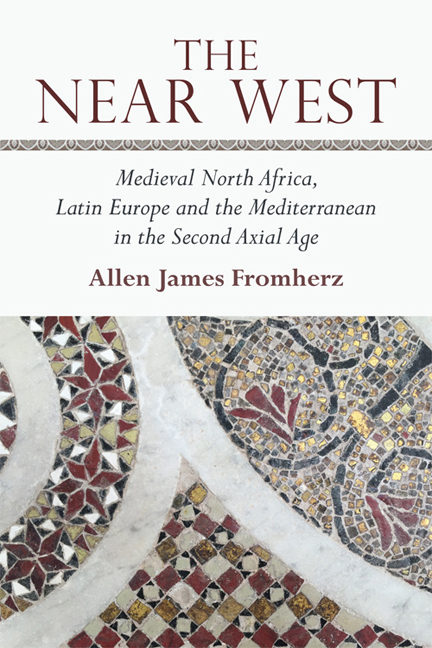Book contents
- Frontmatter
- Contents
- Map: The Near West – Medieval North Africa and Europe
- Personal Note and Acknowledgments
- Introduction: North Africa and the Mediterranean Paradox
- 1 Bèjaïa: Introducing North Africa, Latin Europe and the Mediterranean
- 2 Rome: North Africa and the Papacy
- 3 Tunis: Axis of the Middle Sea
- 4 Marrakech: The Founding of a City
- 5 The Almohads: Empire of the Western Mediterranean
- 6 Between City and Countryside: Ibn Khaldun and the Fourteenth Century
- 7 Conclusions: A Second Axial Age
- Notes
- Bibliography
- Index
1 - Bèjaïa: Introducing North Africa, Latin Europe and the Mediterranean
Published online by Cambridge University Press: 23 September 2017
- Frontmatter
- Contents
- Map: The Near West – Medieval North Africa and Europe
- Personal Note and Acknowledgments
- Introduction: North Africa and the Mediterranean Paradox
- 1 Bèjaïa: Introducing North Africa, Latin Europe and the Mediterranean
- 2 Rome: North Africa and the Papacy
- 3 Tunis: Axis of the Middle Sea
- 4 Marrakech: The Founding of a City
- 5 The Almohads: Empire of the Western Mediterranean
- 6 Between City and Countryside: Ibn Khaldun and the Fourteenth Century
- 7 Conclusions: A Second Axial Age
- Notes
- Bibliography
- Index
Summary
The entire Mediterranean was his classroom. Bright-eyed and curious, the youth from the Italian port of Pisa roamed for his first time through the bustling streets and markets of the North African port of Bèjaïa, also known as Bougie. This commercial city in the northeast of Algeria, only a few hundred miles southwest of Sardinia and almost directly south of Marseille, gave the French their word “Bougie,” candle, after the fine, tapered wax made and traded from there. Even as Europe's candlelight, essential for monastic scholarship in the dark northern winters, was made possible by Bèjaïa, Leonardo Fibonacci's time with the mathematicians of Bèjaïa would soon illuminate far more.
The name Bèjaïa referred to a Berber tribe from the region of the same name. The city is now the bustling capital of the region of Kabylia, a province that has maintained a largely self-professed Berber (Taqbaylit), as opposed to Arab, or French identity to this day. Indeed, the surrounding countryside was heartland of the “Berber Spring,” an uprising against Arabization in the 1980s. The city in the mid twelfth century had a distinctly cosmopolitan character. In the time of Fibonacci, Berber, Arabic and medieval Italian as well French or Catalan and Castilian were spoken in its markets. Andalusi Berbers were especially numerous, carrying on a trade with Muslim Spain that had linked Bèjaïa to Europe for centuries. They maintained contacts with their extended tribe and families back in North Africa. For instance, before the Almohads, the Berber Zirids, had ruled both around Tunis and in Al-Andalus, and engaged in bustling trade. In terms of political power, Fibonacci's Bèjaïa was then tenuously under the control of the vast and powerful Almohad Empire. Although Arabs comprised part of their army and administration and many claimed Arab blood, the Almohads were primarily Berbers. They were not primarily from the Kabylia, but originated mostly among the Masmuda Berbers of the High Atlas Mountains in Morocco. This coming of the Almohads corresponded with the Commercial Revolution.
The Commercial Revolution of the Twelfth Century, a great increase in trade and commerce, was often associated only with the northern half of the Mediterranean and, perhaps, Egypt.
- Type
- Chapter
- Information
- The Near WestMedieval North Africa, Latin Europe and the Mediterranean in the Second Axial Age, pp. 13 - 57Publisher: Edinburgh University PressPrint publication year: 2016



